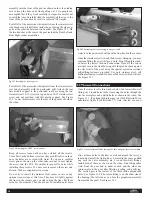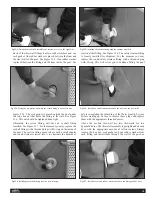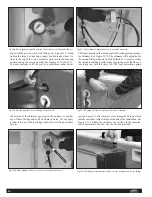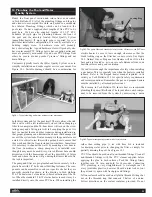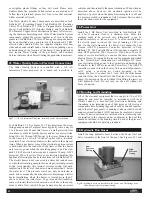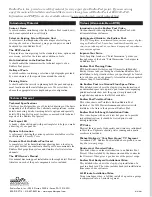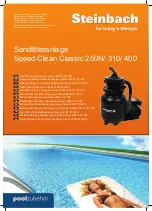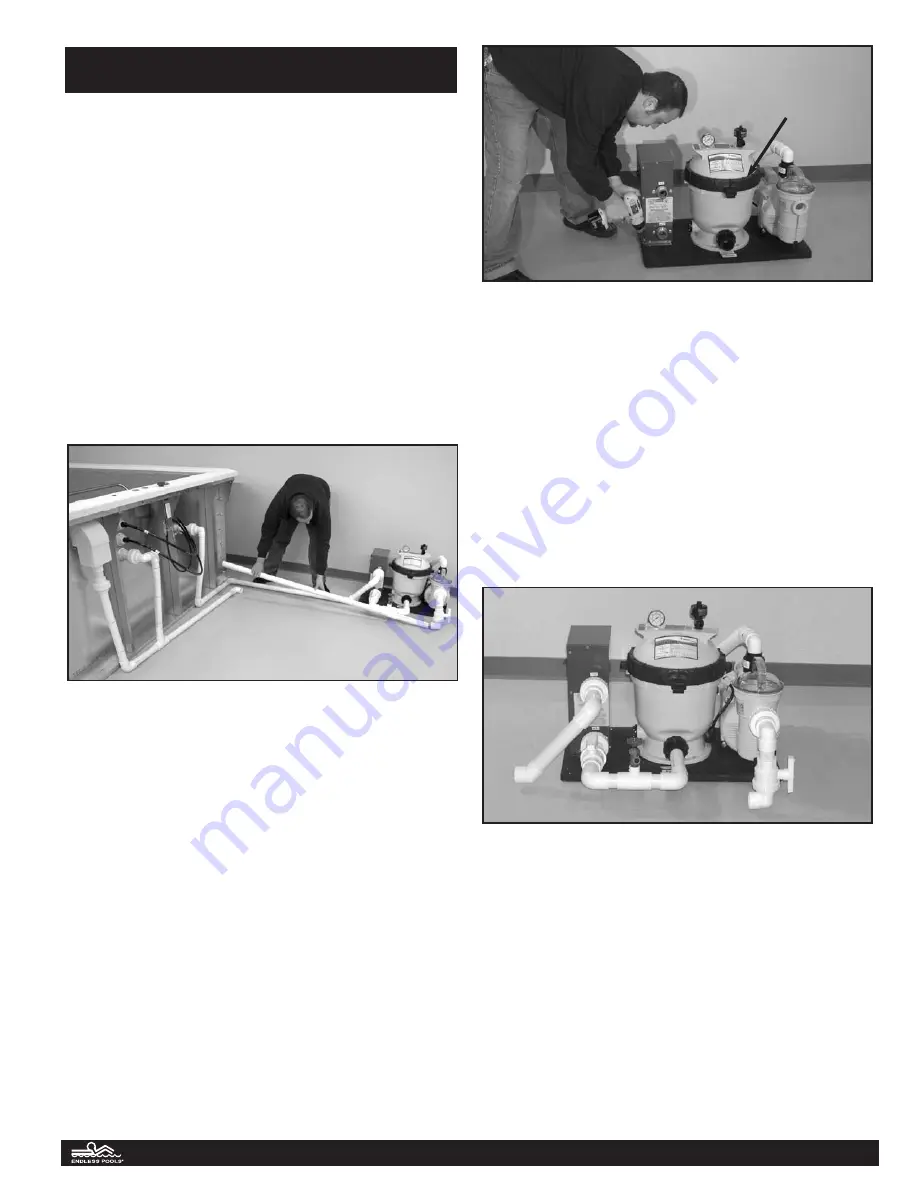
34. Plumbing the Pool and Water
Quality System
Plumb the front panel suction and return lines as described
in Tech Bulletin #16. All of the plumbing fittings and the glue
and cleaner to accomplish this work are packed in a cardboard
box labeled Plumbing Fittings which can be found in the
pool crate. We have supplied short lengths of flex PVC to be
used here. We have also supplied lengths of 1-1/2" PVC
Schedule 40 rigid pipe for plumbing between the front of
the pool and the remotely located Water Quality System
(pump/filter/heater). If more rigid pipe is required for your
particular installation configuration, it is readily available at a
building supply store. A hardware store will probably
have shorter lengths. A good hardware store will probably also
have replacement PVC fittings but we have supplied extras and
more are generally not needed. If you do use PVC fittings from
others be sure to use deep socket “pressure” fittings and not
drain fittings.
Customers typically locate the Water Quality System so as to
simplify installation and make regular service convenient. See
Figure 34.1. Suitable drainage should be a consideration for
both this system and for the pool itself. There is always the risk
that a valve will be left inadvertently closed (when changing a
filter for example) and the 24-hour timer will turn on the circu-
lating pump and a fitting joint will fail, emptying the pool. It is
best to consider these and other scenarios during installation so
that proper planning can eliminate the chance that damage will
occur if the system leaks. Drains or sumps in the general area are
a start. It is critical to test these with a garden hose to ensure that
they work and that the floor is sloped towards them. Sometimes
it is necessary to channel the water by mounting a low dam to
the floor. Sometimes a sump pump must be installed even
though it may never be used. Every site is different but a candid
discussion with the homeowner about the possibility of future
leaks and where the water will go during the time it takes to fix
the leak is important.
The pump and filter are pre-plumbed and fasten securely to the
plastic base with 3/8" bolts and self-drilling fasteners. The com-
ponents can be assembled to suit your specific site but they are
generally installed as shown in the drawing in Tech Bulletin
#16. The heater can be located anywhere downstream of the fil-
ter. When the standard 5.5 KW electric heater is used it may be
installed directly onto the same PVC base. When installing the
electric heater be sure to leave enough clearance so that the
black locking ring on the filter has room to rotate. See Figure
34.2. Natural Gas or Propane Gas Heaters will not fit on this
base and are located so as to ensure safe distances from com-
bustible surfaces and good ventilation.
We can’t stress enough the importance of safety when installing
a gas heater. This is especially true when the heater is installed
indoors. Refer to the Raypak heater manual reprinted in its
entirety as Tech Bulletin #12 for specific safety requirements
and recommendations. Remember, the gas and propane heaters
must be installed by a licensed professional.
The drawing in Tech Bulletin #16 shows how we recommend
plumbing the pump/filter/heater. The layout allows each compo-
nent to be removed from the system by unscrewing a union
rather than cutting pipe. A tee with hose bib is included
for draining water prior to changing the filter or simply for
partially draining the pool. See Figure 34.3.
PVC Glue should be used on all non-threaded fittings. Clean all
non-threaded fittings with the PVC cleaner supplied before
applying the glue to both surfaces. Push the fittings firmly
together, turn 1/8 turn, and hold for 30 seconds. Connecting
PVC plumbing is very straightforward. A watertight seal at
every joint takes practice, however. Should a joint leak, cut out
the part and try again with fresh pipe and fittings.
Teflon sealant should be used on all plastic threaded fittings but
not on the threaded ring that connects 2 halves of a union.
Follow directions on the sealant container provided. Do not
Fig 34.1: Typical plumbing and water quality system placement.
Fig 34.2:The pump, filter and standard electric heater all fasten to the PVC base.
Fig 34.3:Typical water quality system with electric heater.
21
Locking Ring












